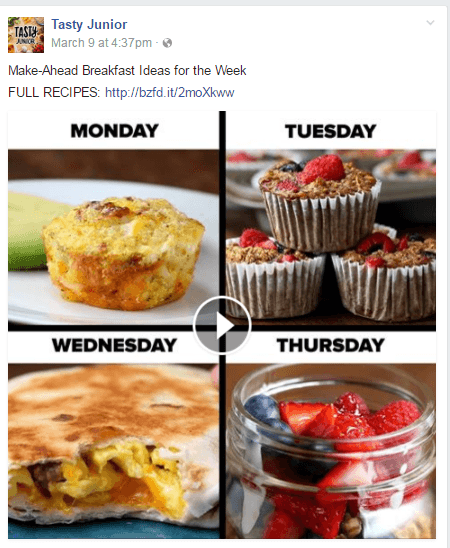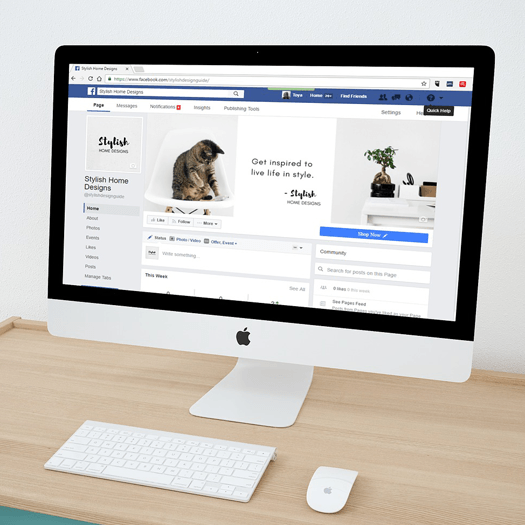Designing Your Social Pages & Posts

There are many problems with brands' social media efforts - like only communicating one way, only posting promotional messages and, perhaps the biggest, only relying on the networks to help their posts reach their audiences.
Organic reach, particularly on Facebook, is dismal for most companies yet managers continue to think that if they post it, social likes will come. While increasing organic reach (who sees the post 'naturally' without the Page admin paying for it) can seem like a fool's errand, there are a handful of time-tested strategies that can make a difference.
1. Think the way your target audience does
Who's your target audience? It's important to start there, and adapt social posts to the demands of those demographics. Consider what type of posts will give your brand traction and prepare your posting strategy accordingly. From age, ethnicity, gender to social and economic standings, all things need to be considered to help your target audience identify with your message. Parents, for instance, seem to be Tasty Junior's target audience as they help them prepare their families for the week ahead.

While there are likely some differences in demographic information for your specific audience from network to network (based on the networks themselves), it is unlikely that you have a young female audience on Facebook but a mature male audience on Instagram - or some other combination. This is helpful information because Facebook Insights provides a pretty good look at your current audience, which can be applied to other networks.
2. Use background image with text overlays
Social media has always been visual, but with added formats (like GIFs and video) it's becoming even more so. This is why, even when you need to convey a message with crisp, short and direct text, you should make use of an effective image in the background.
First of all, you need to ensure that the text is easily readable. Secondly, the combination of foreground text with the background image should be clean, clutter free and aesthetically simple.
Tools like Pagemodo, Canva and Adobe Spark can all help you create these graphics with either some of their stock photos that you can add a text overlay on or with one of your own photos you can upload and tweak.
3. Mind the image size
Every social platform has its own way of displaying images, which is why brands need to be mindful of using optimal image sizes. When you address the size requirement of each platform separately, you can boost engagement because the alternative is a poorly displayed image that will look ugly (for lack of a better word) in people's newsfeeds. When sharing an image with a link on both Facebook and Twitter, the display dimension is rectangular, while for Instagram and for Facebook photo sharing the regular display shape is square.
The most effective strategy is to create two or three different versions of the same image. Moreover, to avoid pixel difference with the images save them in .png format instead of .jpeg. The aforementioned Adobe Spark tool can actually do the adjusting for you automatically.
4. Remember that creative typefaces can make a difference
Creative use of typefaces can give your visual design an extra layer of engagement potential on top of graphics and photography. Although certain fonts like sans-serif for Web layouts are very popular, you always have the freedom to do something different when it comes using fonts for a better design on social media. Adidas, for example, uses a font that plays up its prototype or manufacturing type post that gives details on its shoe.
As for technical consideration, we suggest using at most three fonts at a time and focus on readability before any other aspect.
5. Maintain a consistent approach
Although testing should be encouraged, a brand should ensure a consistent look and feel across all social platforms with a consistent tone. If you have a Google+ or Pinterest page for your business, your Facebook audience should instantly identify it as the brand they already know - look how Applebee's includes a thumbnail logo when it shares pictures from its diners for easy recognition.
6. Consider Web protocols
Since social media is a mostly visual channel, social media managers should know a few details about posting images to the Web.
- The right mode of image color for online interfaces is RGB. For social media and all other Web-based interfaces, RGB images are perfect as they are better for screen display.
- Typically 72 dpi (dots per inch) is ideal for most social media pages to maintain both quality and faster loading speed.
7. Include video and motion
You may have noticed an increasing number of videos and content with motion (like GIFs) in your personal social media feed. As more consumers get used to this eye-catching content, it's important to try out the format in your own initiatives. Thanks to our smartphones, video content is much easier to create than before. High-quality videos are, of course, critical but real-time options like Snapchat Stories, Instagram Stories and Facebook Live are a little more forgiving (as long as the producer of the video has a good Internet connection).
For some inspiration, "Like" Tasty on Facebook as its videos are frequently shared because it takes something complex - recipes - and breaks them down into very manageable steps which empowers their audience to try. Is there anything your business covers that is complex, that you can simplify?
8. Don't forget your CTA
For producing sales or for catching leads, you need to provide prominent calls-to-action along with social posts. While not all social networks allow for links within posts, there are some workarounds like including Instagram links in the profile's bio, advertising or look for features in beta.
Instagram, for instance, is running a test that lets verified accounts add links so it's easy to learn more.
The Bottom Line
Social media networks are finicky, with each of them prioritizing posts in different ways. Brands who are not paying to play, will often get the short end of the stick since friends (like on Facebook) will have their posts prioritized before business Pages. The aforementioned tips, however, are effective ways to engage your audience and analyze and optimize posts for better results.

Subscribe to Our Newsletter!
Latest in Social Media










